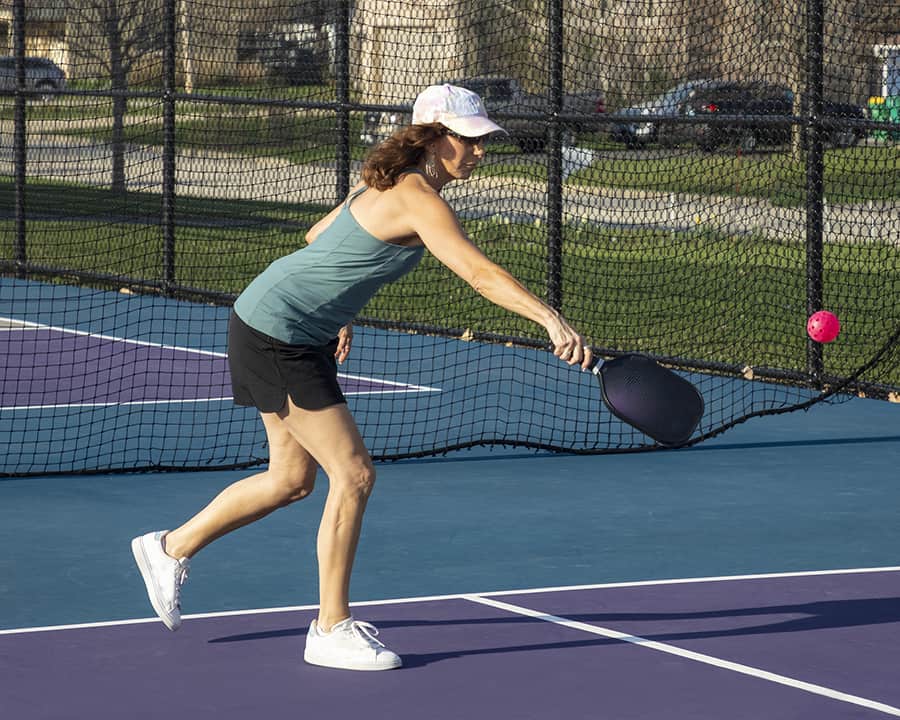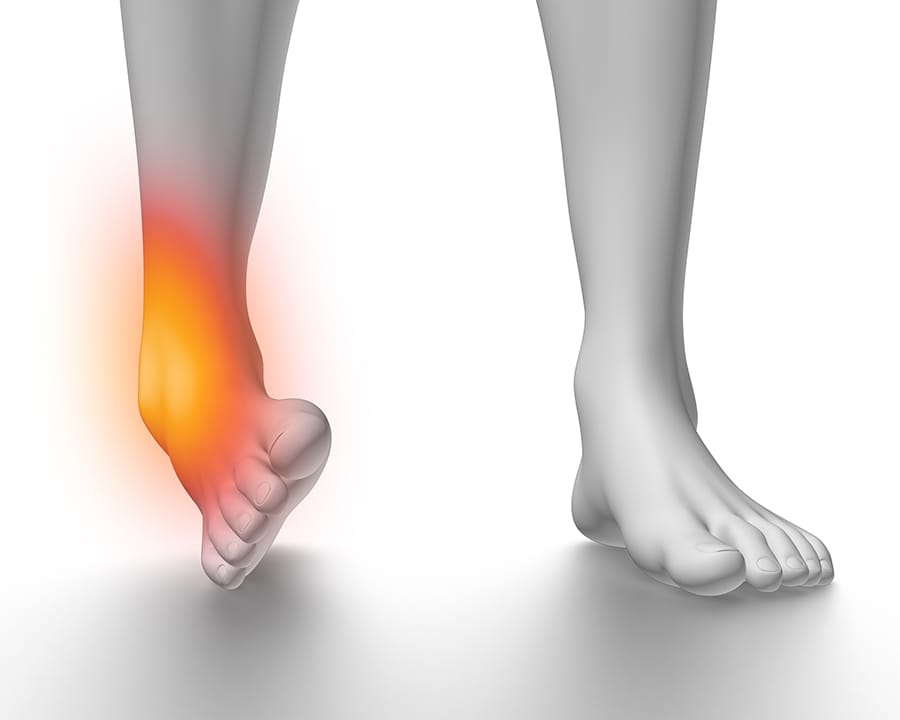
Are you thinking about taking up the game of Pickleball?
Or are you a regular player who wants to avoid injury?
Playing Pickleball is an exciting and fulfilling way to stay active, get some fresh air, and have fun with friends. It’s a great family game that all the generations can play together.
One of the reasons Pickleball is gaining popularity among players of all ages is due to its ease of learning and its low-impact nature. This aspect makes it a perfect choice for those who want to stay active but can no longer play high-impact sports. But you can make a high impact if you want to. Unfortunately, like any activity that involves physical exertion or repetitive motion, Pickleball can lead to potential injuries over time. From exuberant rallies to slipped shots and from marathon matches to pulled muscles – it is no surprise that many Pickleball players pick up an injury at one time or another. But don’t worry, that shouldn’t put you off playing the game. Injuries are rare. Plus, there are lots of ways for you to avoid these injuries and several easy ways to recover from these common sporting injuries – with the help of a physical therapist – if they do happen.
What Is Pickleball?
Pickleball has become the hot new game that everyone is talking about. The game is popular with people of all ages looking for an energetic, competitive game that’s also easy to learn. From its humble start as a yard game over forty years ago, Pickleball is now considered one of the fastest-growing sports in America. It offers many benefits, such as an enjoyable cardio workout – promoting good cardiovascular health and socialization opportunities.
The game also has an interesting history. Believe it or not, Pickleball has been around since the mid-20th century. It all started on Bainbridge Island, Washington, where a group of families wanted to create a new game that all ages could enjoy. Originally known as “Pickle’s Ball,” the name was later changed to Pickleball.
The game combines elements of traditional tennis, badminton, and ping pong. It’s easy to learn, social, and a great way to exercise while having fun. You play the game with a paddle and a small plastic ball with holes, and you can play indoors or out and as singles or doubles. To play the game, you must be able to anticipate your opponent’s next move while making quick decisions, which requires a combination of mental agility and physical skill. From “dinking” to “lobbing,” there are various techniques you can use to gain an advantage over your opponent(s). It’s not just about hitting the ball back and forwards. It’s about staying one step ahead of your opponent. But what makes Pickleball so appealing is its ability to bring people of all ages and skill levels together. From beginners to seasoned players, everyone can join in.
As you delve deeper into the sport, you’ll find a variety of courts available depending on your skill level and personal preferences. From indoor courts that allow for year-round play to outdoor courts that offer a beautiful setting. Some courts have more forgiving surfaces to help you avoid injury. At the same time, others are specifically for tournament play. But no matter what type of court you choose, one thing is for sure: the contagious energy of this sport will keep you coming back for more.
But where do you start if you want to pick up a paddle? The first step is to research online or contact your local parks and recreation department to find out where the pickleball courts are in your area. Once you’ve identified a nearby court, reach out to the court managers or local pickleball clubs to see if there are any open play times or leagues that you can join.
Overall, Pickleball is the perfect activity if you’re looking for a stimulating new sport that is exciting and fun and gets your heart rate up. It is an incredibly dynamic game that requires quick thinking and a lot of strategy. So, whether you’re an experienced athlete or just getting into playing sports, Pickleball is well worth checking out.
But as with any sport, playing Pickleball is not without risk. You can pick up an injury if you’re not careful.

What Are The Most Common Pickleball Injuries?
Pickleball is a dynamic sport that can lead to various injuries, primarily if you don’t take proper precautions. The most common pickleball injuries range from minor sprains to severe fractures. Ankle sprains and knee injuries are some of the most frequently occurring pickleball injuries, with symptoms such as swelling, bruising, and limited range of motion. Some players also experience shoulder and elbow pain from overuse and improper swinging form. On rare occasions, concussions can occur from falls or accidental hits with the ball.
But by being aware of these common injuries and taking appropriate measures to prevent them, you can continue to enjoy the game while minimizing the risk of injury.
How To Prevent Pickleball Injuries
As a pickleballer, the best thing you can do to prevent injuries is to stay mindful of your body. Focus on adequately stretching, strengthening the right muscles, and practicing proper technique. Only push yourself as far as you’re capable; if an injury occurs, getting help from a physical therapist is crucial.
As we always say, the best way to deal with an injury is not to get injured in the first place. Easier said than done, of course. But prevention is essential when it comes to keeping yourself safe and healthy if you play regularly. Pickleball is a fun and super-exciting game that can provide many health benefits. However, the sport can also cause injuries if you don’t stretch and strengthen your muscles properly. You need to warm up before playing, and simple stretches like leg swings, side bends, and shoulder rolls can help you loosen up and prevent injuries. In addition to stretching, doing strengthening exercises like squats, lunges, and push-ups can increase your muscle endurance, which also reduces your risk of injury. By incorporating these exercises into your weekly workout routine, you can enjoy the game while safeguarding your body.
There are other things you can do to stay safe, including wearing proper protective gear like helmets and knee pads to protect you from some of the most common pickleball injuries, and maintaining good posture, and making sure that you take frequent breaks to prevent chronic pain and overuse injuries. Also, make sure you get plenty of rest and sleep in between games, as an overworked body is more prone to injuries.
How To Treat Common Pickleball Injuries
If you do pick up a Pickleball injury, it can be a source of real pain and discomfort, so seeking treatment is vital for a speedy recovery. The best treatment for you will depend on the type and severity of your injury. For instance, the RICE method (rest, ice, compression, and elevation) can effectively reduce swelling and inflammation for a mild to moderate sprain. A fracture requires immobilization of the affected bone with a plaster cast or splint to promote healing, and in the case of a dislocation, a doctor must realign the affected joint.
If you don’t have a fracture or dislocation, then physical therapy is the most effective way to recover from injured muscles, tendons, and ligaments, regain your strength and flexibility, and get back on the Pickleball court. We can also help you improve your performance and raise your Pickleball game by working with you on your strength, stamina, form, and technique.
Despite its inherently low-impact nature, certain injuries still occur in pickleball players. Common injuries associated with Pickleball include sprains, strains, and cuts from falls or collisions with other players. However, identifying the source of the problem can be tricky. It may be related to poor technique or overuse, or it could stem from underlying health conditions or previous injuries. By working with a PT, you can get back on track and keep enjoying all the benefits of this fun and challenging game.
Physical therapy is a vital healthcare tool that you can use to treat a wide range of ailments and conditions. From the unsteady steps of an adult recovering from a brain injury to the wobbly legs of a child with a disability, physical therapy can help improve all aspects of mobility and control. We also help people recover from car accident traumas and manage chronic conditions like arthritis. By focusing on exercises, stretches, and other therapeutic techniques, we create a personalized treatment plan for you that addresses your needs and Pickleball-related goals. With the right mindset, discipline, and our expertise, you can maximize your Pickleball enjoyment while minimizing the risk of an injury.
Dr. Jonathan Ruzicka is a Manual Therapist whose experience as a private therapist for professional athletes drove him to further his education attaining unparalleled skills in tissue mobility work, performance based rehab, injury prevention, myofacial release and joint mobilization to optimize human performance.
- 5 Lower Back Pain Stretches to Ease Your Discomfort - August 23, 2024
- How to Avoid Foot and Ankle Pain and Stay Active! - July 26, 2024
- Essential Stretches for Sciatica Pain: Your Path to Relief - June 10, 2024


